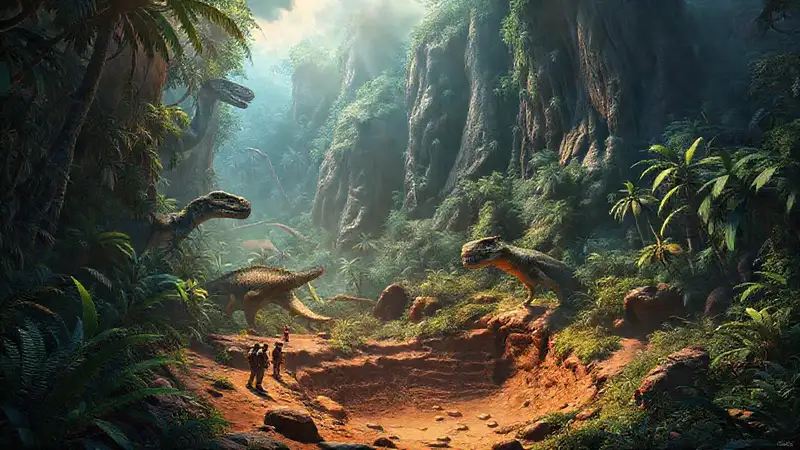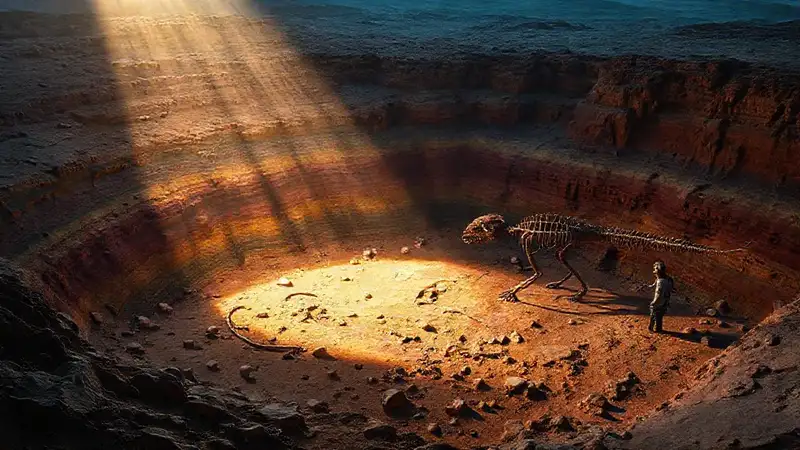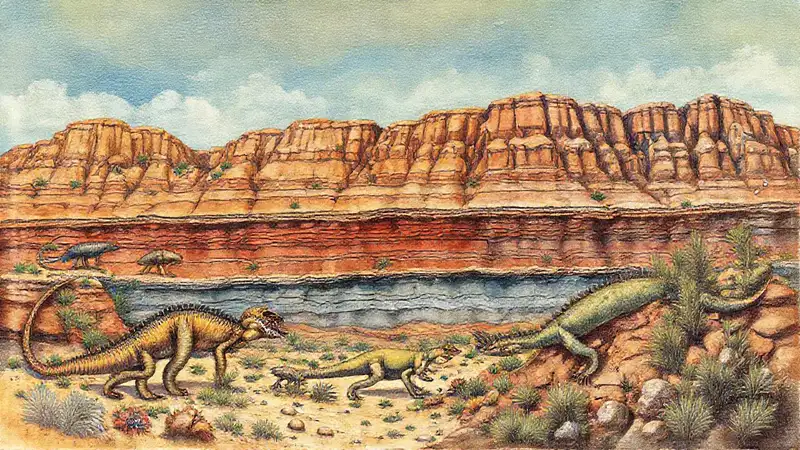The Mesozoic Era, often called the “Age of Reptiles,” represents a pivotal time in Earth’s history. Spanning from approximately 252 to 66 million years ago, it witnessed the rise and dominance of dinosaurs, the evolution of early mammals, and significant changes in global climate. For decades, our understanding of this era, particularly the Late Cretaceous, was largely based on fossil records and geological interpretations. However, recent and increasingly sophisticated paleontological discoveries are fundamentally altering this picture, prompting scientists to rethink long-held assumptions and build a far more nuanced and dynamic narrative. These updates aren't just incremental; they represent a genuine paradigm shift, forcing us to reconsider the interactions between various ecosystems and the specific conditions that ultimately led to the Cretaceous-Paleogene extinction event.
This article will delve into some of the most exciting recent finds impacting our comprehension of the Triassic, Jurassic, and Cretaceous periods. We’ll explore how new discoveries in these periods are challenging existing theories, providing fresh insights into the evolution of life, the environmental changes occurring, and ultimately, the dramatic events that marked the end of the Mesozoic. The focus will be on highlighting the significance of evidence and its implications for reconstructing this critical epoch of Earth’s past.
The Triassic Period: A Harsh Beginning
The Triassic Period (approximately 252 to 201 million years ago) wasn’t a time of flourishing landscapes and abundant life. It followed the devastating Permian-Triassic extinction event, the largest known extinction in Earth’s history, and the planet was still recovering. Paleontological finds from this era reveal a world dominated by reptiles, primarily archosaurs – the group that would eventually give rise to dinosaurs and crocodiles. However, these early reptiles were often relatively small and poorly adapted to the fluctuating climate. The Triassic was characterized by periods of intense aridity, with vast deserts covering large portions of Pangaea, the supercontinent that encompassed most of the globe.
Recent fossil discoveries, particularly in China and South America, are dramatically expanding our understanding of Triassic reptile diversity. The identification of more sophisticated archosauriforms, showing an increased reliance on aquatic habitats and more efficient metabolic processes, suggests an earlier development of the features that would later become hallmarks of dinosaurs. Furthermore, the analysis of fossilized pollen and plant remains demonstrates that these arid environments weren't entirely barren; they supported specialized plant life adapted to low water availability, forming the base of a surprisingly resilient ecosystem. The focus on sedimentary rock formations is revealing layers of intricate ecological detail.
The Jurassic Period: Dinosaur Ascendancy
The Jurassic Period (201 to 145 million years ago) saw the true rise of dinosaurs. This era witnessed a significant warming trend, leading to the formation of vast shallow seas and lush, tropical forests. The Jurassic is renowned for the dominance of large sauropods – the long-necked herbivores – and the emergence of early theropods, the ancestors of carnivorous dinosaurs. Fossil sites across North America, Europe, and Asia provide a remarkable record of this evolutionary transformation.
Recent research, particularly focusing on bone histology – the microscopic structure of bone – has provided unprecedented insights into dinosaur growth rates and life histories. Studies have shown that some sauropods grew at astonishing speeds, reaching enormous sizes within relatively short periods. Additionally, discoveries of dinosaur footprints and fossilized skin impressions are offering valuable data on dinosaur locomotion and behavior. The examination of fossilized amber, particularly from Germany, has yielded remarkably preserved insects and other small organisms providing crucial evidence about the Jurassic environment.
The Cretaceous Period: A Complex Ecosystem

The Cretaceous Period (145 to 66 million years ago) represents the final stage of the Mesozoic Era and is arguably the most studied. It saw the peak of dinosaur diversity, with a wide array of forms existing alongside increasingly complex mammals. However, the late Cretaceous was also marked by significant environmental changes, including fluctuating sea levels, volcanic activity, and potentially even a gradual cooling trend. The fossil record from this period is extensive, offering a detailed picture of the diverse fauna.
Recent finds are challenging previous assumptions about the stability of Cretaceous ecosystems. For example, discoveries of fossilized pollen indicating the presence of flowering plants (angiosperms) much earlier than previously thought demonstrate a faster rate of evolution and diversification than scientists initially believed. Furthermore, the analysis of ancient seabird fossil remains is providing new information on the evolution of flight and the adaptation of these birds to marine environments. The emerging understanding of the role of ancient microbes is challenging long-held beliefs about the scale of the Cretaceous ecosystem.
The Chicxulub Impact and its Aftermath
The end of the Cretaceous Period, marked by the catastrophic Chicxulub impact event (approximately 66 million years ago), is a period of intense research. The discovery of the Chicxulub crater in the Yucatan Peninsula of Mexico, along with associated iridium-rich clay layers around the globe, provided the initial evidence for this impact. However, ongoing research is unveiling a more complex picture of the immediate and long-term effects of this devastation.
New geological data suggests that the impact wasn’t a singular event but a series of impacts, possibly occurring over a period of hundreds of thousands of years. These recurring impacts dramatically altered the climate, triggering widespread wildfires, tsunamis, and a prolonged period of darkness due to dust and aerosols blocking sunlight. Researchers are now investigating the impact's influence on ocean chemistry and the decline of many marine species, including ammonites. The study of sedimentary layers reveals a complex cascade of environmental changes linked to the impact, highlighting the fragility of ecosystems even during the age of dinosaurs.
Conclusion
The ongoing revolution in paleontological discoveries is fundamentally reshaping our understanding of the Mesozoic Era, particularly the Late Cretaceous. The information we’re gaining from fossil finds, geological analysis, and increasingly sophisticated dating techniques is prompting a reassessment of established theories and a deeper appreciation for the intricate workings of ancient environments. It’s becoming increasingly clear that the Mesozoic wasn't simply a “Age of Reptiles,” but a dynamic and ever-changing period of evolutionary innovation and ecological upheaval.
Ultimately, these new finds demonstrate that our understanding of the past is always subject to revision, and that each new piece of evidence has the potential to unlock previously hidden chapters in the story of life on Earth. The commitment to rigorous scientific investigation will undoubtedly continue to yield exciting new insights, further refining our knowledge of this crucial period in Earth’s history and reminding us of the extraordinary resilience and adaptability of life itself.


Deja una respuesta